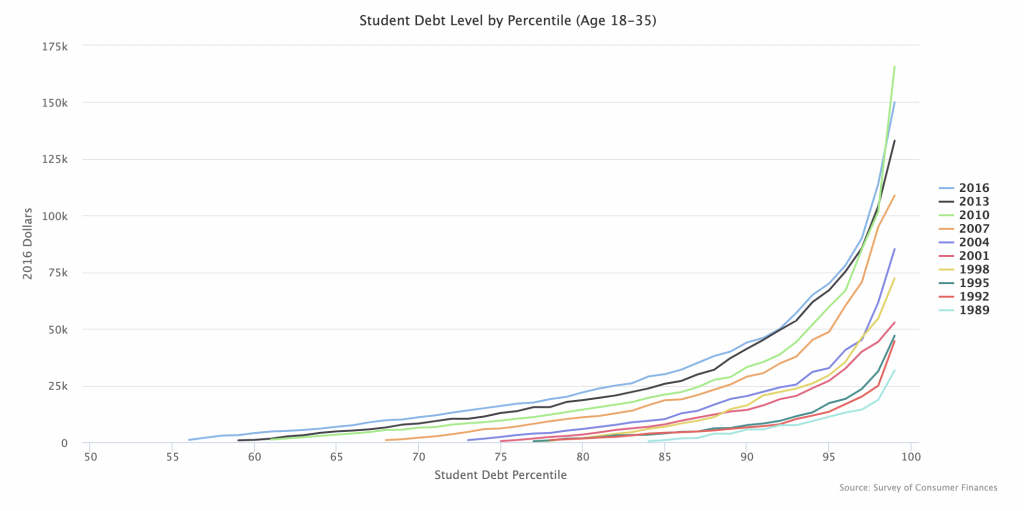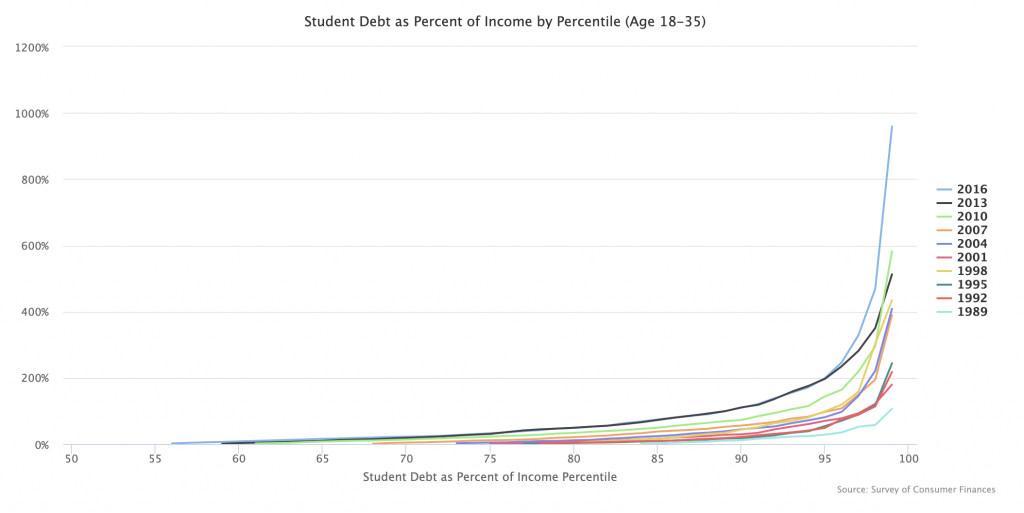Using the latest Survey of Consumer Finances, I broke out student debt levels by student debt percentiles below. This is a more comprehensive look at student debt trends than the medians and means you usually see. (Note: hover your cursor over the graph to get a list of values at each percentile.)

The graph shows that the starting point for student indebtedness keeps moving lower and lower in the distribution. In 1989, positive student indebtedness starts at the 84th percentile, meaning 16 percent of young families carried student debt. By 2016, the starting point was the 56th percentile, indicating that 44 percent of young families carried student debt.
Student debt levels at any given percentile have also risen substantially. In 1989, the 90th percentile carried $5,598 of student debt while the same percentile had $44,000 of debt in 2016. The 80th percentile had no debt in 1989, $1,610 of debt in 1992, and $22,000 of debt in 2016.
In the next graph, I divide student debt levels by current income in order to produce a similar distribution. (Note: hover your cursor over the graph to get a list of values at each percentile.)

The trend here is similar. In 1989, the debt of the 90th percentile was 11.5% of their current income. By 2016, it was 109.7%. In 1992, the debt of the 80th percentile was 3.9% of their current income. By 2016, it was 48.4%.

